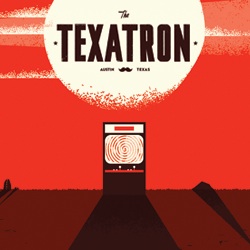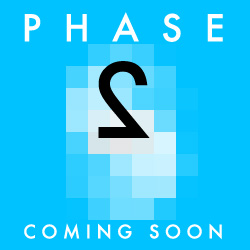TREASURE HUNT: M0DUS/OROTIO’S HD GUNSTAR HEROES PS3 THEME
Spotted on infamous games forum NeoGAF, resident artists m0dus and orioto have collaborated on a new basically stunning PlayStation 3 theme based on Treasure 16-bit cult hit shooter Gunstar Heroes, with one HD artwork each and a set of themed icons.
m0dus is no stranger PS3 themes — after a series of unofficial creations, Konami hired him to create the official Silent Hill 5 theme, and orioto has been working the 16-bit HD airbrushed remakes for some time as well.
m0dus and orioto’s experimental thread of art collaboration . . .
See more posts about: Offworld Originals
WHAT’S HE BUILDING IN THERE: INTROVERSION’S SUBVERSION
It’s been near exactly two years since Darwinia and Defcon developer Introversion first revealed their official “next game” (not including multiplayer expansion Multiwinia), with a debut video showing its initial real-time cityscape generating algorithms.
Fast forward to now and, surprisingly, we still have very, very little to go on beyond what we knew then: apart from its familiar vector-beam design, the ongoing blog entries showing Subversion‘s progress have been just as opaque, bar optimizations of those algorithms, and a fractal descent showing ever more detail at the building-by-building level.
We learned in March that part of this is understandable, if not deliberate, when programming head Chris Delay admitted that “we genuinely don’t know what’s going on,” but (he’d said earlier) “every day I work on it I’m even more convinced – this is the big one, Introversion Software’s Magnum Opus, and it’s going to be the best game we will ever make.”
And so every scrap of information, as with Delay’s most recent blog post, becomes a desperate hunt for anything that might take us that one level deeper into their mindset. In it we learn that Subversion’s progress is now focused on systems of standardized components: “Sensors, Actuators, Emitters, and Controllers,” and while we don’t get much in the way of narrative, a sense of its sandbox possibilities (and, as its name might suggest, an espionage-tinged flavor akin to Introversion’s debut title Uplink) is certainly starting to gel:
…smash one of the Actuators with a hammer, and one of the doors will stay where it is, while the other door continues to open and close. Smash one of the outer sensors and the Actuator will push the door of the end of its slide. Cover the motion sensor with a plastic bag and it wont send any detection messages to the computer, leaving the doors closed. Stick some chewing gum over the inner proximity sensors and they will think the doors are already closed, thus the control computer will leave the doors open.
Push a bin in-between the two doors and they will close on it, and sensors on the insides of the doors will detect this obstruction, and the doors will open slightly, then try to close again. The doors will be stuck in an open/close/open loop, constantly hitting the bin and re-opening, just as you’d see in real life. Cut any of the signal wires, or short-circuit them to set a high or low value. Or just plug straight into the control computer and tweak the status variables in memory, making the system do whatever you want whenever you want. None of these are activities or opportunities that I have explicitly created, but all are possible because I’ve simulated the system in sufficient detail. The possibilities for amazingly complex systems and interactions – from Introversion AND from the Subversion community – is kind of breathtaking.
The blog post contains more in-game shots and video of working systems — the previous twelve ‘It’s all in your head’ entries in the archive will give more of a sense of the scale and the magnitude of the game, while we all patiently await further concrete detail.
It’s all in your head, Part 13 [Introversion]
Previously:
The art of vector-war – Offworld
Introversion playing with fire with unbeatable DEFCON AI – Offworld
See more posts about: Introversion, Offworld Originals
DIVING DEEPER INTO AQUARIA
The latest in David Rosen’s ever-popular design tour videos takes a look at Bit Blot’s indie adventure Aquaria, paying special attention to the intricacies of the game’s level composition and animation system, as well as a number of important features never explained to the player.
Previously:
At the core of the World of Goo – Offworld
A deeper look at Knytt Stories – Offworld
The dynamic fluids of Chronic Logic's Gish – Offworld
Bit Blot's Aquaria hits Steam – Offworld
Bit Blot bring indie-hit Aquaria to Macs – Offworld
See more posts about: Offworld Originals
LITTLEBIGWATCH: ALEX EVANS TALKS CRAFTWORLD, SOCIAL GAMING
If you missed the previously mentioned appearance by Media Molecule co-founder Alex Evans at Wired’s NYC store in early December, the outlet is now showing the entirety of his presentation at Game|Life.
Evans’ talk was generally a basic overview of LittleBigPlanet and its user-focused, social platform roots (with a keen aside on using arcade game high-score boards as an early example of user-generated content) that might be old hat to die-hard fans, but the 2:30-3:10 mark is particularly notable for its highlight reel and explanation of ‘Craftworld,’ the 2D vector prototype of LittleBig‘s gameplay that the company put together to sell the game to Sony (and which will explain the origin of LBP‘s secret ‘Yellowhead’ costume).
Game|Life Video: The Making of LittleBigPlanet [Wired]
See more posts about: Offworld Originals
JETDAISUKE CONDUCTS THE GADGET ORCHESTRA
One last game-tech mash-up morning update: Jetdaisuke, the same electroclash-bespectacled rock star that taught us how to make a talkbox from our DSi, conducts his ‘gadget orchestra’ consisting of a DS Lite playing Toshio Iwai’s Electroplankton, Korg DS-10, App Store Japanese-gong oddity ‘Mokugyo (with Cat)’ on an iPod Touch, an iPhone running Brian Eno’s generative music app Bloom, and, most traditionally, a Korg Kaossilator.
[via Tiny Cartridge]
See more posts about: Offworld Originals
GROK THIS: RECEPTORS’ KORG DS-10 ALBUM
Following the last in our impromptu and now apparently ongoing series of Korg DS-10 showcases, I was pointed in the direction of Receptors’ all DS-10 album ‘groKwork,’ available as a free download via last.fm (along with a number of other more traditionally chippy EPs).
Receptors is the solo alias of Jeremy Kolosine, the curator behind Astralwerks’ excellent all-star/all-chiptune Kraftwerk cover album 8-bit Operators, and while groKwork is a bit harder and more dense than my usual predilection, it is a good starter set for those wondering just what the DS is capable of churning out.
groKwork for gameBoy – Korg DS10 – Receptors [last.fm, thanks n0wak!]
Previously:
Korg DS-10 + bendy straw = handheld talkbox – Offworld
Extra Hyper Korg DS-10 performance – Offworld
Four times the DS-10 – Offworld
See more posts about: Offworld Originals
COME TO BIG DADDY
Problem: how to raise awareness of BioShock in a traditionally first-person-shooter-averse territory? Spike/2K’s answer: nevermind the footage, channel an ever so slightly perceptible Chris Cunningham influence and get to the crux of the game — underwater city, sinister little girls.
[via Gemaga]
See more posts about: BioShock, Offworld Originals
FOUR TIMES THE DS-10
But then some game music a bit less cerebral, but no less enjoyable: ambient/electronica blog Disquiet notes this four-man half-hour Korg DS-10 live jam mp3 from Melbourne’s DyLAB, which shifts in and out pretty effortlessly from well tuned thumps to utter blippy madness, and (for all the app’s precise stylus-ing) must have been a sight to behold.
And because this comes up nearly every time we mention DS-10, a reminder: the software’s no longer an import-only rarity; publisher Xseed has released it stateside, where you can find it at most major online retailers. Let us know if you create anything amazing.
Nintendo Korg DS-10 x 4 Jam MP3 [Disquiet, via Gus]
Previously:
Korg DS-10 + bendy straw = handheld talkbox – Offworld
Extra Hyper Korg DS-10 performance – Offworld
See more posts about: Offworld Originals
THEY WANT TO MAKE AN ARTWORK OUT OF YOUR DREAMS
Any opportunity to bring the ponderous weight of a Whitney Biennial artist to the site: an overly opaque post over at Rhizome on ‘Video Game Soundtracks 1983-1987‘ sent me on an afternoon’s goose chase trying to figure out just what the hell is going on here, and I think I have it:
Artist Seth Price, concerning himself with a multi-part work on music “solely as digital information: programmed, encoded, extracted, sometimes going through MIDI translation, uploaded and downloaded, finally burned to compact disc; all the while passing through numerous data compressions and file formats,” devotes one chunk of that thesis to game music.
His wonderfully overwrought statement on the work (pdf) comes up with some decent musings on the nature of the beast:
Structurally, the genre presents unique limitations. A track must be energetic but not distracting, the consummate “background music”. It need not follow a standard musical trajectory, since it must be capable of looping ad infinitum, allowing players as much time as needed with a given screen or level. Because of this, many of the album tracks start abruptly or quickly peter out, their duration determined by the programmer who removed them from the circuits. For this reason, many of the tracks must be considered extracts or samples of larger and arguably infinite compositions.
And Price’s end result: a lengthy megamix of 8- and 16-bit era straight-up MIDIs joltingly cut back to back.
Yes darling, but is it art? Either way, I’ll give him the benefit of the doubt if only for this description of his later video piece, ‘Editions‘: “a partial inventory of imagery: dancing cats, grated cheese, civic violence, Richard Serra, video-game audio effects and a roiling ocean.”
UbuWeb Sound: Seth Price [via Rhizome]
See more posts about: Offworld Originals
POLYGRAPH’S KAKUNA T-SHIRT CASTS HARDEN
Allow me just one more fashion update for an otherwise slow pre-New Year’s workday: seeing a new King of Games design made me wonder if there’d been any recent news from my other favorite jp.games-fashion outlet, POKÉMON 151, and indeed there is.
Launched officially by Pokemon developer Game Freak in June, design house Polygraph came up with four original designs (Articuno, Cubone, Hypno, and MewTwo) that were all as subtle, elegant and jaw-droppingly beautiful as a Pokemon shirt is ever going to get (dig, especially, Hypno/Sleeper’s sinister silhouette).
Now I see they’ve updated with a new design featuring Kakuna that’s giving me just as much a touch of that old, familiar design-lust.
See more posts about: Offworld Originals






